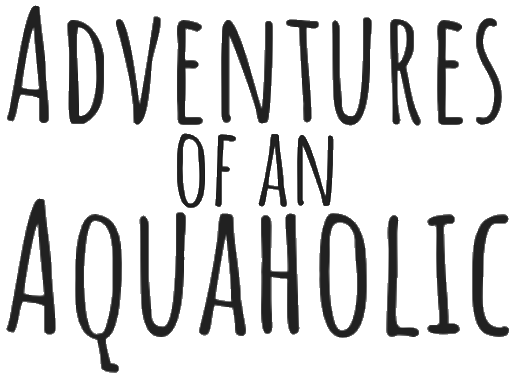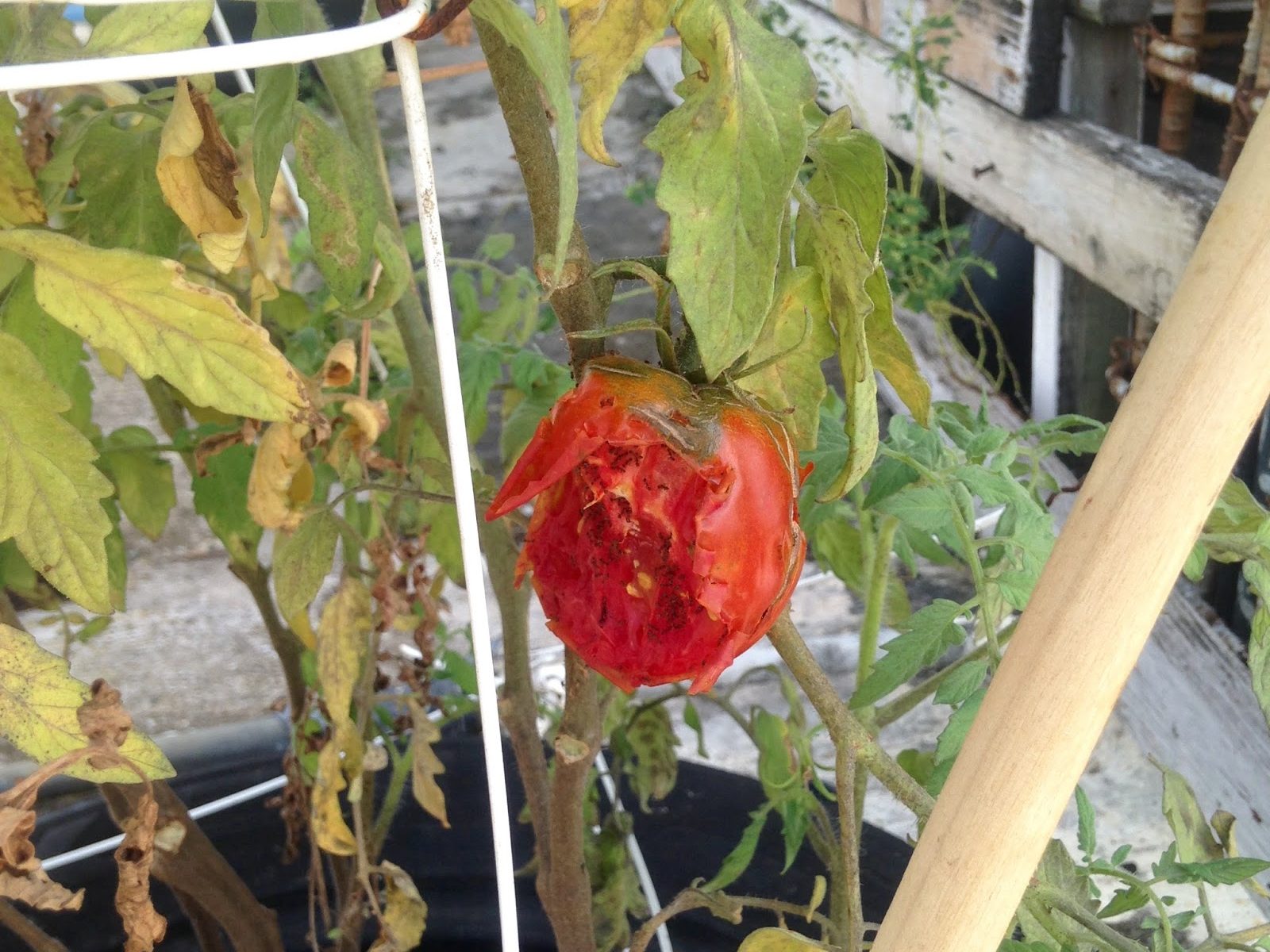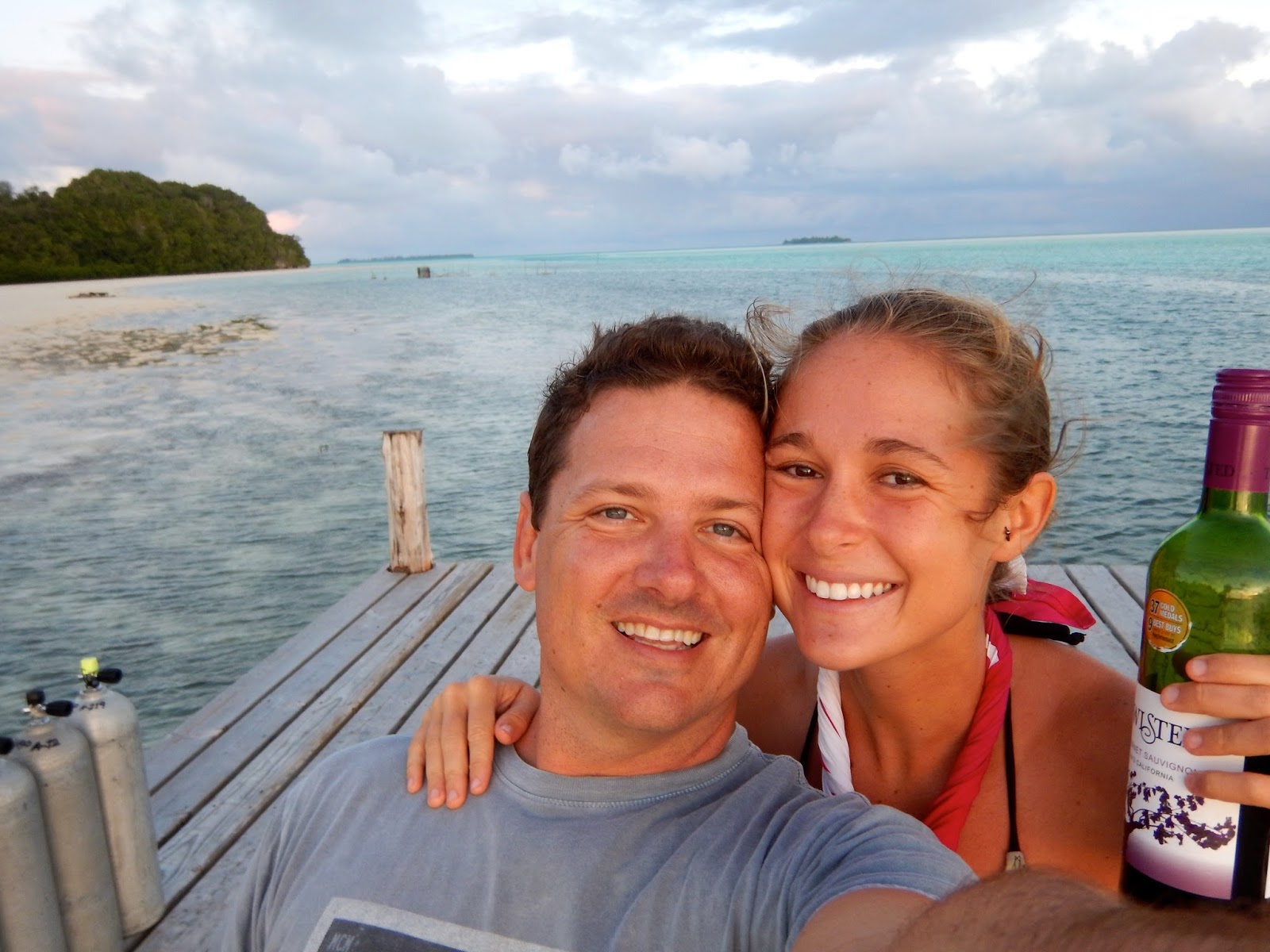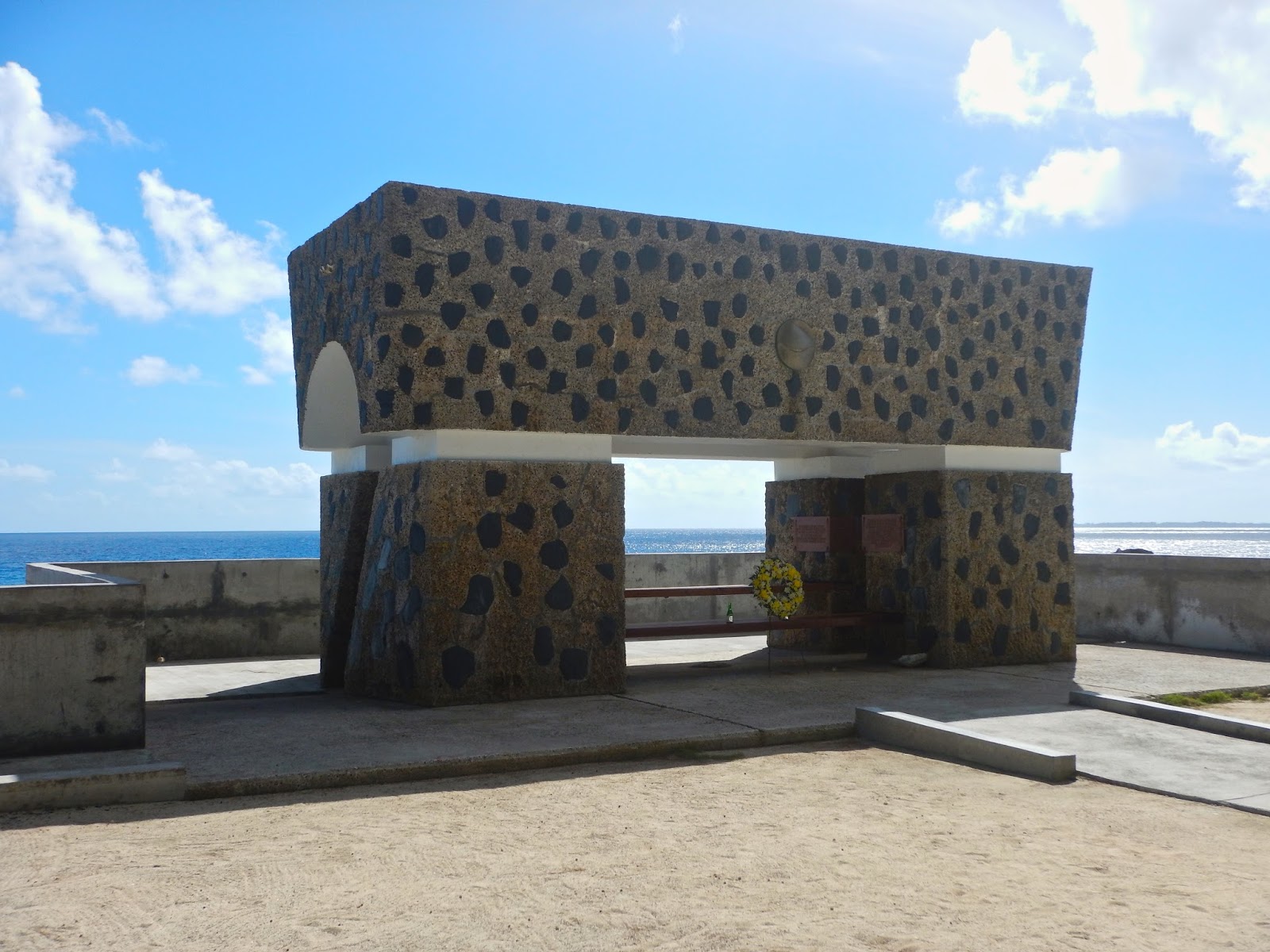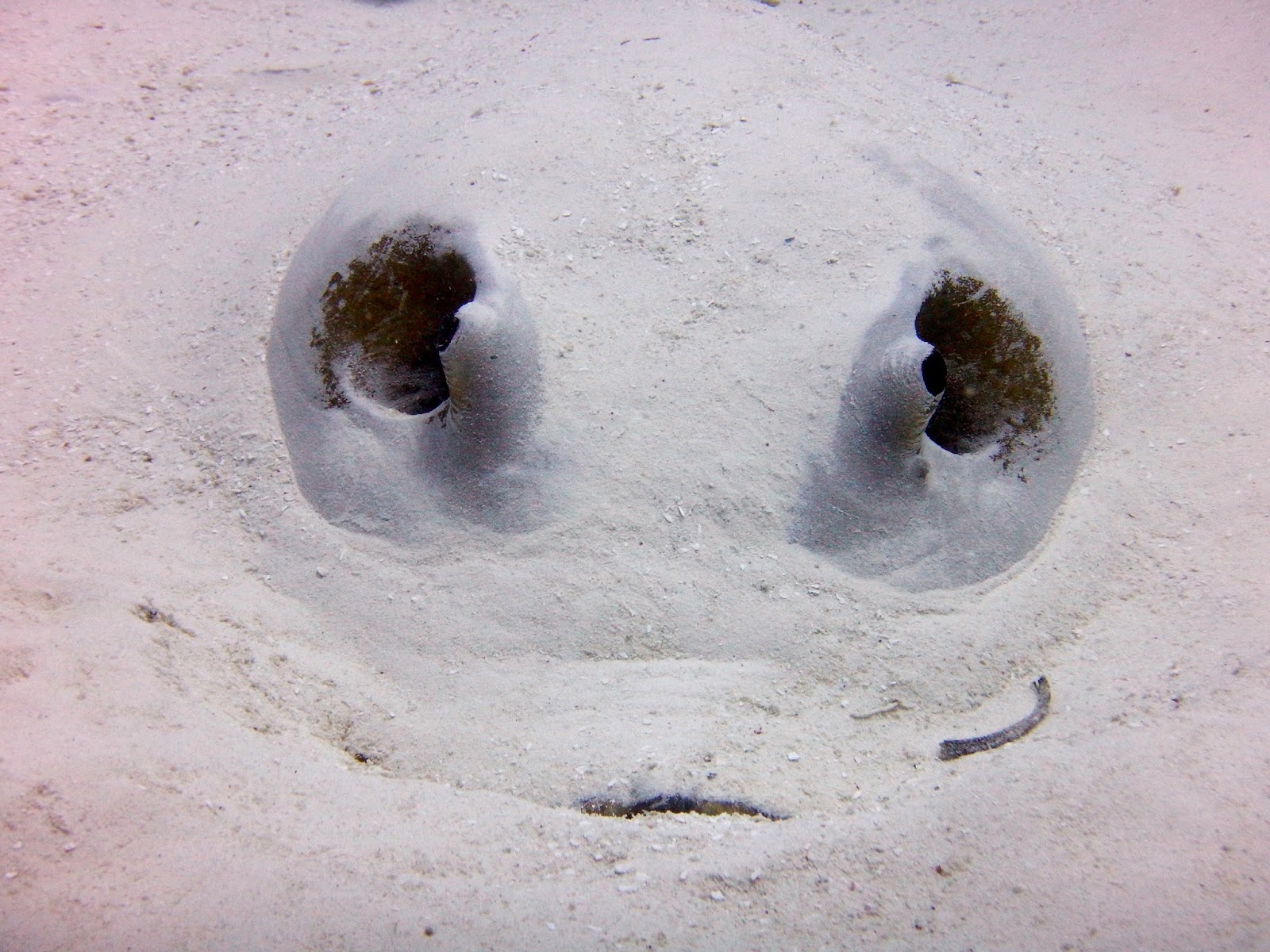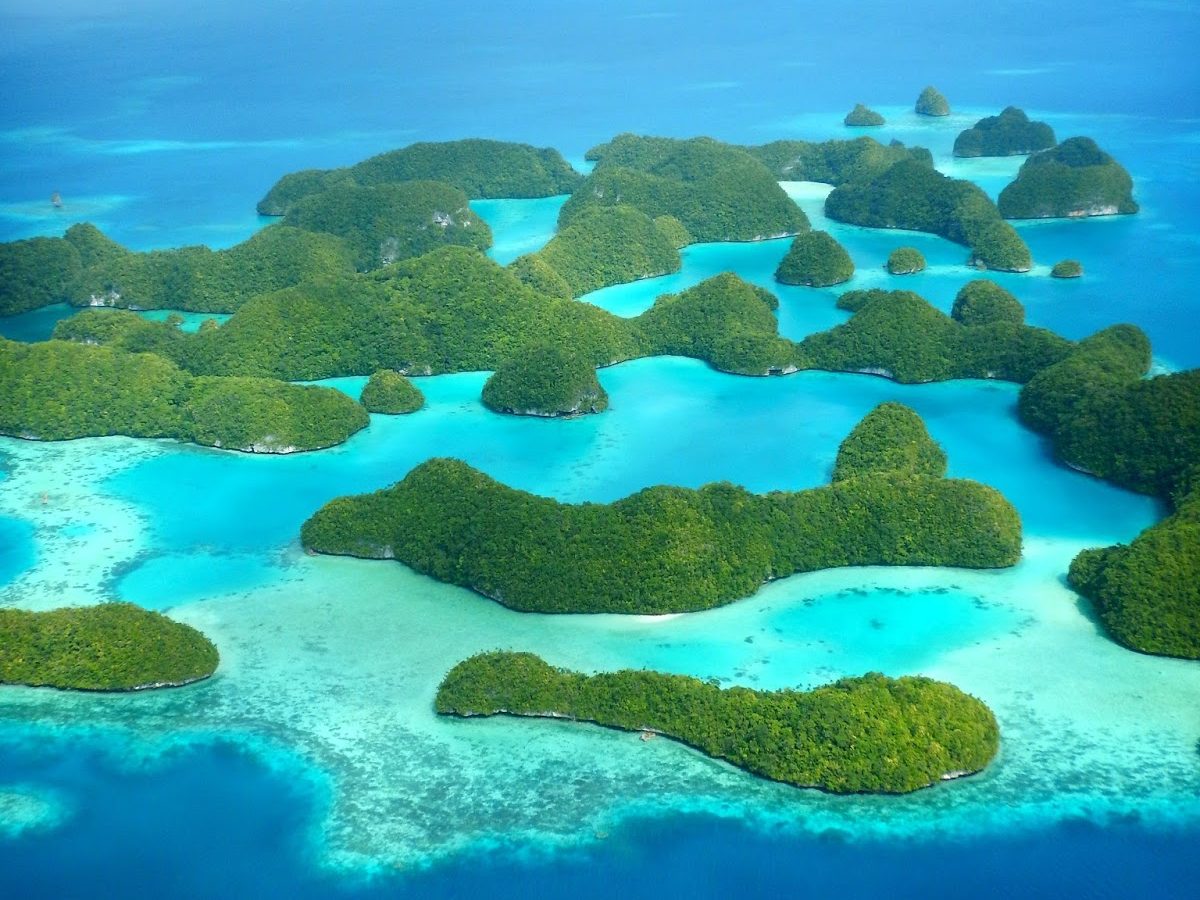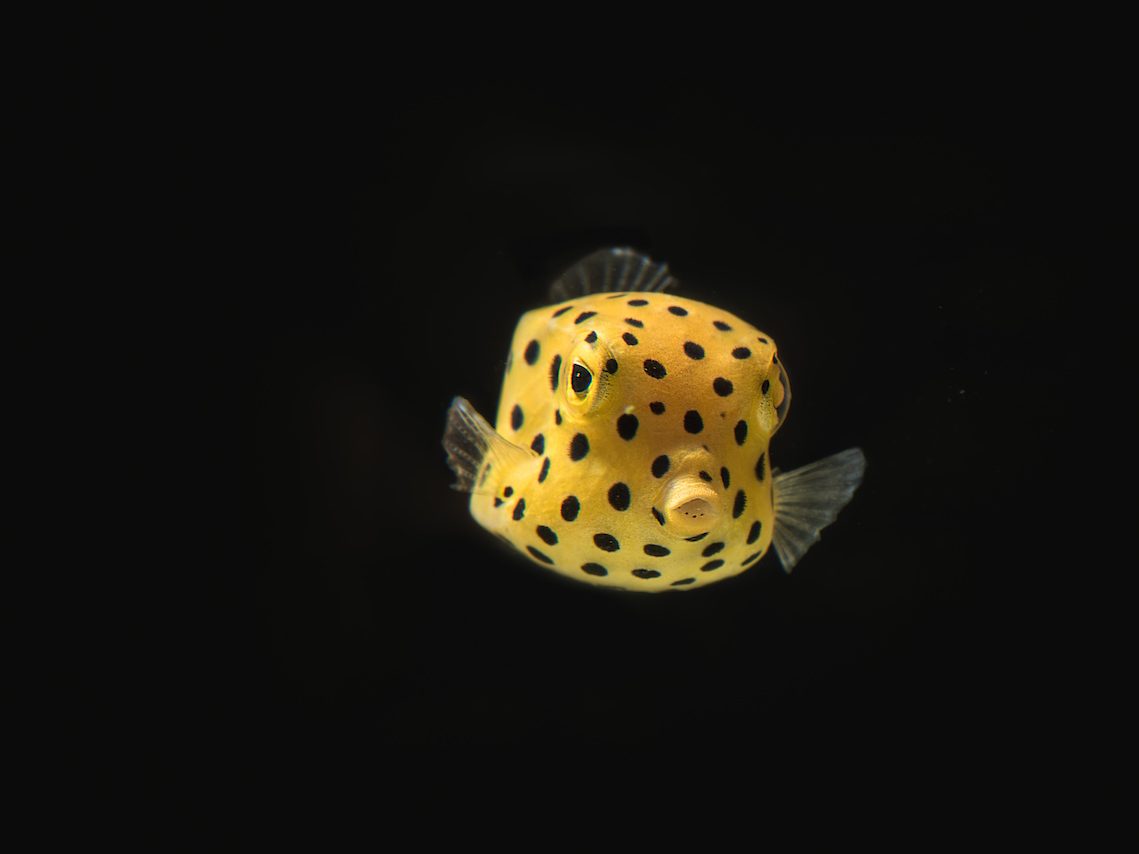
It is mid October and yet rainy season wares on. June, July, and August usually make up rainy season here, but September didn’t see an end to the storms, and here we are in October and the winds are still too crazy to venture out with our little boat. It has been months since we last saw Ulong or Sies Corner, as dive boats are more often then not confined to the inner reefs. If I never see German Channel again I will not be disappointed. (German Channel is a famous dive site where people from around the world flock to see mantas. The mantas rarely show anymore as the site has become overcrowded by tourists).
To combat the boredom, Fletch and I took a little field trip to Palau’s aquarium the other day. Yes, Palau has an aquarium. It is as tiny and insignificant as the diving here is grand. I’m not sure why they bother really. You could see just as many fish by grabbing a snorkel and jumping into the bay where it is located.
 |
| Palau Aquarium |
At the entrance we learned about Chuab, the Giant, and the origin of the Palau Islands. I do love the histories and legends here. There seem to be a lot more of the latter.
This is the legend of the origin of Palau:
Long ago, all that existed of Palau were the islands of Peleliu and Anguar. There lived a woman on Anguar who’s name was Latmikaik. She bore a baby boy whom she named Chuab. The morning after Cuab’s birth, his mother was astonished to see that he was already crawling, and her amazement grew as Chuab learned to walk the very next day. He continued to grow amazingly fast and ate huge meals. He grew so big that his food had to be tied to a bamboo pole and raised to his mouth. He wouldn’t stop growing and pretty soon he had to get his own food and water. Sometimes he would reach into a pigpen and eat the hogs and sometimes even young children were snatched and eaten to satisfy his enormous appetite.
The village people grew worried about this hungry, giant boy in their midst, and went to Latmikaik to ask her what should be done. The mother, now disgraced because of her son, resignedly told them that they could kill Chuab. (Because you know, your reputation is more important than your kid. What a great mom).
The people started to gather a lot of firewood and piled it into the center of the village. Noticing this unusual activity, Chuab asked his mother what they were doing. Latmikaik tearfully told her son that the villagers were preparing to cook a special meal for him. (Apparently she never taught him not to take candy from strangers). After there was enough wood, the people told Chuab to stand in the center of the woodpile because they were honoring him. Without his noticing, the people put dried coconut leaves on the woodpile and started a fire. Chubby was rapidly consumed by flames and fell down and died. He was transformed into a woman and formed the islands of Palau. (Because a man island just wouldn’t do). The head became Ngerchelong, the neck Chol, and the groin became Aimeliik. Her back formed the Desbedall or east coast of Palau, her stomach became Keiukl, or the west coast, and her burnt legs, Koror (that’s where I live), Malakal, Ngerkebesang, and Ngeruktabel.
As Chuab lay there, the mother requested that the villagers cover his body with a mat, but there were not enough mats to cover the body. Branches also had to be used. This is why Palau is half forest and half plains. (I wonder if this is what kids learn in Geography class). They called these islands Belau.
The aquarium also had a cool 3D model of the topography of Palau and the surrounding ocean floors, allowing us to see the Palau trench and other trenches. Then we walked past tanks representing the different ecosystems in Palau: mangroves, seagrass, inner reef, reef crest, marine lakes, the deep ocean, and the outer reef.
Then we found the “Touch Tank!” The number one thing we learn as divers is not to touch the sea life. As underwater ambassadors we observe, but never touch or harass. Some creatures are poisonous or venomous and can harm us. And the reverse is true too, the oils on our skin can harm certain marine species. Of course the main thing everyone wants to do is interact with the marine life, so getting permission to touch the critters in the exhibit was the second biggest highlight of the aquarium.
| Fletch is really happy about holding that sea cucumber. |
The biggest (or perhaps I should say littlest) highlight of the aquarium was a fish hanging out in one of the reef tanks. The juvenile yellow boxfish. These guys are small enough to fit inside a ping pong ball and I don’t know how they aren’t all over the internet along with kittens and puppies.
 |
| Juvenile Yellow Boxfish |
Squee! It’s just so freakishly cute! Here is a stock photo (because it’s a bit tricky to get a photo of something that small buzzing around like a bumblebee behind two thick panes of glass).
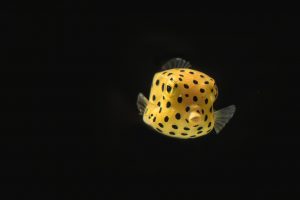 Stock image of a juvenile yellow boxfish. |
